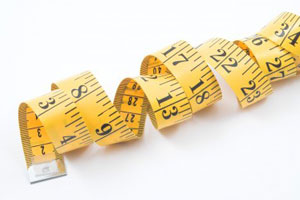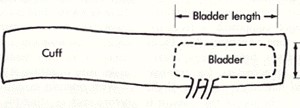![]()
Blog @ SunTech
Advice from the BP Measurement Experts
Larger Blood Pressure Cuffs, Please!
 If you ask any nurse or doctor about blood pressure (BP) cuffs, one of the most common questions you will receive is "Why can't we get a larger cuff?" With the obesity epidemic increasing globally, the need for larger blood pressure cuffs is becoming more pronounced. The World Health Organization states that "currently more than 1 billion adults are overweight - and at least 300 million of them are clinically obese."1
If you ask any nurse or doctor about blood pressure (BP) cuffs, one of the most common questions you will receive is "Why can't we get a larger cuff?" With the obesity epidemic increasing globally, the need for larger blood pressure cuffs is becoming more pronounced. The World Health Organization states that "currently more than 1 billion adults are overweight - and at least 300 million of them are clinically obese."1
So why can't BP cuff manufacturers just make larger size cuffs?
One would think that it would be easy to design a cuff that fits the obese population. However, there is actually a regulatory requirement for the size and range of blood pressure cuffs...it is called the "80/40 rule". The AAMI SP10 (Association for the Advancement of Medical Instrumentation) standard states that in order to obtain an accurate blood pressure measurement, the cuff bladder length should be approximately 80% of the circumference of the upper arm and the cuff bladder width should be optimally 40% of the circumference of the upper arm. Applying the "80/40 rule" to an obese patient, the cuff bladder length can increase to 80% of the larger arm circumference, but the cuff bladder width may not be able to be increased to 40% of the arm circumference, since the width of the cuff may be too large to fit the upper arm. In other words, the circumference of the arm is getting larger, but the overall length of the upper arm remains the same, which makes it difficult to design a properly-sized BP cuff for the obese population.
 Some BP cuff manufacturers have developed "long" cuffs for each standard size cuff (i.e. adult cuff and adult long cuff) to alleviate this issue, but these cuffs do not solve the problem of taking accurate BP measurements on obese patients. In fact, it may make the reading higher, causing a myriad of additional issues with patient diagnosis. The difference between the standard cuff sizes and the "long" cuff is just the overall length of the cuff. The actual bladder size remains the same. So if you use a "long" cuff on a patient that falls outside the intended range of the cuff, you will still be able to wrap the cuff around the patient's arm, but the bladder length and width is outside the "80-40 rule." As a result, the bladder may not occlude the artery completely when inflated and you run the risk of obtaining an inaccurate measurement.
Some BP cuff manufacturers have developed "long" cuffs for each standard size cuff (i.e. adult cuff and adult long cuff) to alleviate this issue, but these cuffs do not solve the problem of taking accurate BP measurements on obese patients. In fact, it may make the reading higher, causing a myriad of additional issues with patient diagnosis. The difference between the standard cuff sizes and the "long" cuff is just the overall length of the cuff. The actual bladder size remains the same. So if you use a "long" cuff on a patient that falls outside the intended range of the cuff, you will still be able to wrap the cuff around the patient's arm, but the bladder length and width is outside the "80-40 rule." As a result, the bladder may not occlude the artery completely when inflated and you run the risk of obtaining an inaccurate measurement.
So the question remains...how do you design a BP cuff for the obese population when the cuff has to follow the "80-40 rule"?
[1] http://www.who.int/dietphysicalactivity/publications/facts/obesity/en/
Interested in getting more SunTech news, product info, as well as
tips, tricks, and insights from BP experts?
Sign up to get fresh content delivered direct to your inbox.



